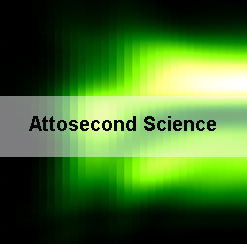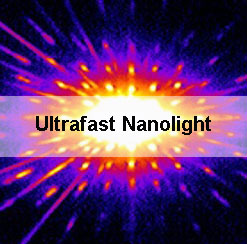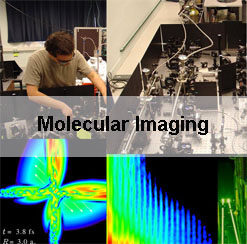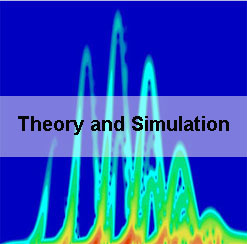Head of Attophysic group : Pascal SALIERESScientific goalsIn the last ten years, the development of perfectly controlled femtosecond laser pulses at high intensities and few-cycle duration has opened a whole new range of opportunities. Indeed, this allows controlling with fs/as precision their interaction with matter and, in particular, creating secondary sources of XUV radiation in the attosecond range (1 as= 10-18 s) using the high harmonic generation (HHG) process. These advanced femtosecond/attosecond sources allow probing the structure and dynamics of matter on the atomic/electronic timescales and lengthscales (Angström). This has become a hot topic in the scientific community with intense international competition.Based on the expertise accumulated over 30 years of intense laser-matter studies, the main goals of the Attophysics group in the last five years have been the following: I) Understand and control the laser-driven rescattering dynamics of an oscillating electron with the ion core, that leads to a number of important processes, such as electron-ion elastic scattering, multiple ionization or recombination with emission of attosecond pulses of XUV light II) Develop the attosecond technologies, i.e., the synthesis of attosecond sources with controlled properties (polarization, single/multiple pulses separated in space/time, …), their advanced characterization using attosecond metrology, the buildup of integrated attosecond beamlines stable and reliable for users III) Develop new types of spectroscopies (high harmonic spectroscopy, attosecond photoionization spectroscopy) making use of the attosecond emission in order to study ultrafast electronic and nuclear dynamics in the gas phase as well as in the solid phase. IV) Develop new (lensless) imaging techniques in the XUV with high temporal (atto/femto) and spatial (nm) resolutions allowing the observation of various dynamical processes (spin reversal of magnetic nano-domains, biological cell imaging) V) Study high harmonic generation in solids (semiconductors, dielectrics, 2D materials: graphene, MoSe2) for applications to: ’all-solid-state’ attosecond emission, spatio-temporal manipulations, nanoplamonics, PHz optoelectronics… |
Research topics
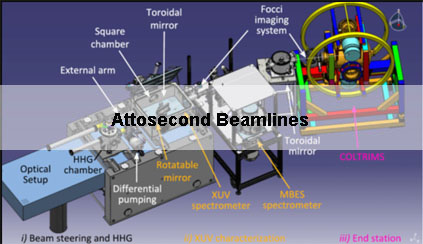 |
Membres
Projets
-
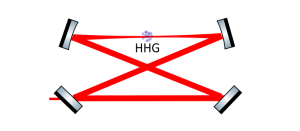
ANR ASAP project (2024-2028)
The ASAP project proposes to explore the quantum properties of light produced by high-order harmonic generation. An optical frequency comb with high average power and a repetition rate of several tens of megahertz will be developed with the aim of producing a light source with unique properties in the extreme ultraviolet range Architecture of the…
-
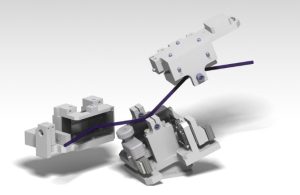
ANR HELIMAG project (2022-2026)
Helical dichroism of magnetic structures High-order harmonic generation (HOGG) has recently made available light sources delivering femtosecond (fs) or attosecond (as) pulses, carrying spin angular momentum (SAM) or orbital angular momentum (OAM). The former are associated with circular polarization and carry unitary angular momentum (AM). The latter have wavefronts whose inclination rotates helically around the…
-
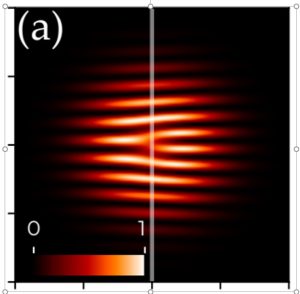
CEFIPRA MultiDAM project (2024-2027)
Tailoring ultra-short light pulses is a promising way of studying fundamental questions about the ultrafast electronic dynamics in matter, with foreseen new technological applications. The current project is advancing attosecond physics by addressing two key bottlenecks: How to generate frequency-tunable attosecond XUV pulses that carry spin or orbital angular momentum? Tunability is crucial for probing…
-
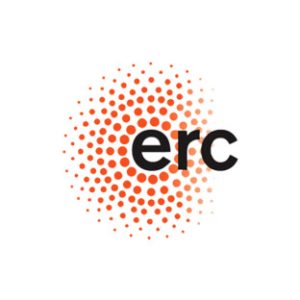
ERC Starting Grant SATTOC project (2023-2028)
The ERC Starting Grant SATTOC “Solution ATTOsecond Chemistry” project involves studying the chemical dynamics of solvated systems using state-of-the-art attosecond spectroscopy tools. Attosecond pulses, which can reach the X-ray range, excite electrons in the inner electronic layers of molecules, i.e. as close as possible to atomic nuclei. These excited states of matter are highly ephemeral,…
-
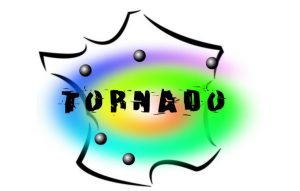
TORNADO project (2023-2027)
Chiral light-matter interactions – PEPR LUMA : Moonshot TORNADO A multi-scale, multi-dimensional approach to chiral light-matter interactions to enhance chiroptical responses. The former are associated with circular polarization and carry unitary angular momentum (AM). The latter feature wavefronts whose inclination rotates helically around the axis of propagation, and carry any integer value of MA unit.…
Domaines Techniques
-
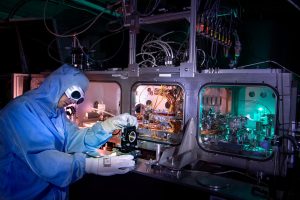
ATTOLab platform
Ultrafast dynamics in dilute and condensed phases ATTOLab is a CEA/LIDYL experimental laser platform based at the Orme des Merisiers site, dedicated to interdisciplinary studies of ultrafast dynamics – electronic and nuclear dynamics on femto- (10-15) and atto- (10-18) second time scales – in dilute and condensed phase systems. ATTOLab is a platform open to…
-
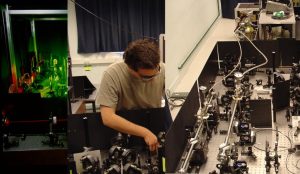
SOFOKLE Platform
The Attophysics group manages the SOFOKLE laser chain, which delivers pulses at a rate of 3 kHz, wavelength 0.8 µm, duration 40 fs, and energy 700 µJ. A post-compression optical bench reduces the duration to 10 fs, with an output energy of 200 µJ. In addition to coulombic explosion and electron diffraction experiments, the laser…
Emplois
-
Measuring decoherence and entanglement in attosecond photoemission
Stage M2CEA Saclay, Site de l’Orme des merisiers (91) Essonne, FranceMarch 3 2025January 2 2025Domain, Specialties : PHYSICS Keywords: ultrafast optics, atomic and molecular physics, quantum optics Research Unit : LIDYL/ATTO The aim of the internship is to generate attosecond pulses using a new high-power Ytterbium laser and to use them to investigate the ultrafast photoemission dynamics of gases, in particular, to study in real time the decoherence resulting…
-
Study of attosecond dynamics in the liquid phase thanks to developments in ytterbium laser technologies
Stage M2CEA Saclay, Site de l’Orme des merisiers (91) Essonne, FranceJanuary 31 2025March 3 2025Domain, Specialties : Laser Keywords: Non linear optics, Physical chemistry, Ultrafast lasers Research Unit : LIDYL / ATTO Electronic motion in molecules is now accessible thanks to attosecond (10-18 s) spectroscopic tools. The characterization of these pulses of light and their generation were the focus of the 2023 Nobel Prize in Physics, and have since…
Thèses
-
Development and characterization of a reliable 13.5 nm EUV OAM carrying photon beamline
DICO : Radiation-matter interactionsParis-Saclay Ondes et Matière (EDOM) SaclayThe Extreme UltraViolet (EUV) photon energy range (10-100 nm) is crucial for many applications spanning from fundamental physics (attophysics, femto-magnetism) to applied domains such as lithography… -
Influence of ionization density in water on fluorescent solutes. Application to the detection of alpha radiation
DICO : Radiation-matter interactionsParis-Saclay Sciences Chimiques: Molécules, Matériaux, Instrumentation et Biosystèmes (2MIB) SaclayThe location and rapid identification, at a distance, of sources of alpha and beta particle emissions on surfaces or in wet cavities or solutions, in nuclear facilities undergoing decommissioning or… -
High Harmonic Generation in cavity for an attosecond quantum source
ATTO : Plasma physics and laser-matter interactionsParis-Saclay Ondes et Matière (EDOM) SaclayAttophysics is at the forefront of time-resolved spectroscopy. Indeed, it harnesses the shortest light pulse probe that can be produced experimentally, thanks to the high harmonic generation (HHG)… -
Exploration of the energy deposition dynamic on short time scale with laser-driven electron accelerator in the context of the Flash effect in radiotherapy
PHI : Radiation-matter interactionsParis-Saclay Ondes et Matière (EDOM) SaclayThe objective of the thesis project is to analyze the physicochemical processes resulting from the extreme dose rates that can now be obtained in water with the ultra-short (fs) pulses of… -
Measuring quantum decoherence and entanglement in attosecond photoemission
ATTO : Radiation-matter interactionsParis-Saclay Ondes et Matière (EDOM) SaclayThe PhD project is centered on the advanced study of attosecond photoemission dynamics. The objective is to access in real time decoherence processes induced, e.g., by electron-ion quantum… -
Plasma Mirrors: towards extreme intensity light sources and high-quality compact electron
PHI : Radiation-matter interactionsParis-Saclay Ondes et Matière (EDOM) SaclayResearch objectives: expand the capabilities of the WarpX Partice-In-Cell code for lower cost-to-convergence using mesh refinement. Devise a high-charge highquality injector for laser-plasma… -
Very high energy electrons radiotherapy with beams from a wakefield accelerator
PHI : Radiation-matter interactionsParis-Saclay Ondes et Matière (EDOM) SaclayResearch objectives: Use numerical modelling to optimize the properties of laser-plasma accelerators in the 50 MeV-200 MeV range for VHEE radiotherapy: (i) optimize the properties of a laser-plasma…
Thèmes de recherche
-
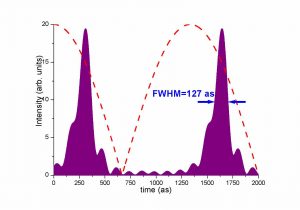
Physique et chimie femtoseconde-attoseconde / Femtosecond-attosecond physics and chemistry
While the pulse durations of infrared lasers are reaching the fundamental limitation imposed by the duration of the optical cycle (a few femtoseconds), High-order Harmonic Generation has recently…



